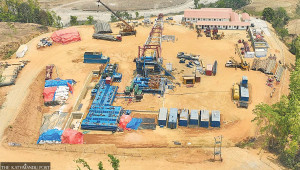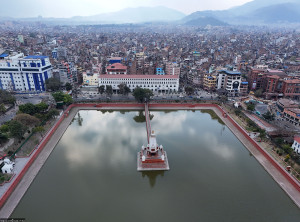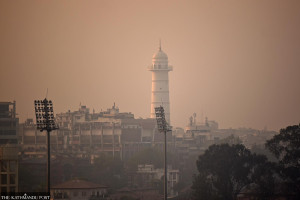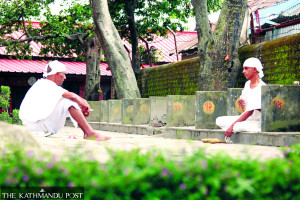Columns
A circuitous route to Beijing
Many strategists in New Delhi often choose to ignore that China is an integral part of South Asia.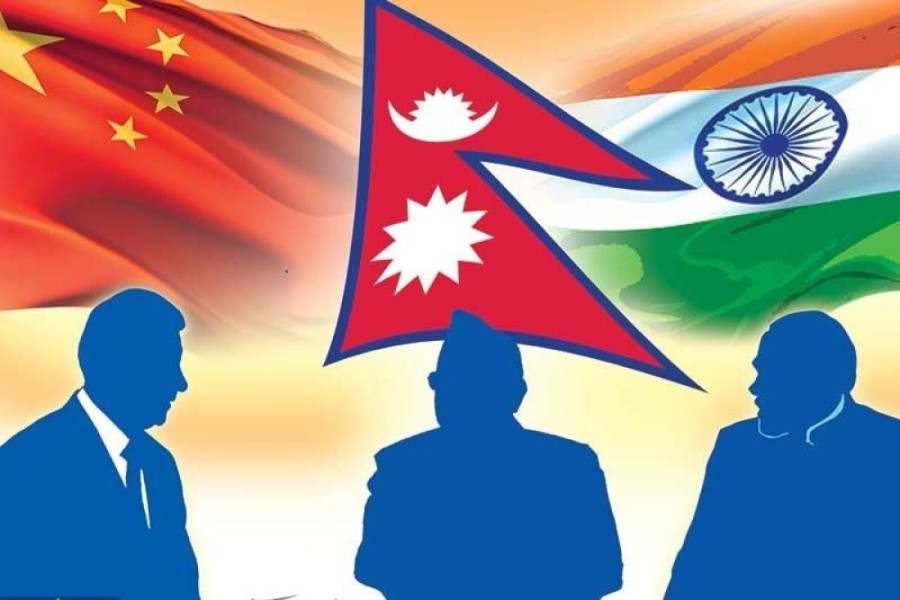
CK Lal
Prime Minister Pushpa Kamal Dahal has come back from New Delhi with a bagful of assurances. In tangible terms, he has nothing to show for his long-awaited trip other than a herd of 15 Murrah bulls for seeding better quality water buffaloes. In a way, it is just as well since the divergence of priorities between Nepal and India hasn't narrowed enough for settlement of longstanding issues on the basis of mutual give and take.
Just as in life, there is no such thing as a free lunch in bilateral negotiations. Prime Minister Dahal lacked the political capital, personal will or public support back home to commit anything substantial in order to elicit a commensurate response from his hosts. He had to grab what was on offer without asking too many questions.
Routine agreements such as the ones for the construction of a fertiliser plant in Nepal, laying a second intra-country petroleum pipeline, conclusion of a revised trade and transit agreement and announcement of a few joint hydropower projects could have easily been done at the level of the concerned authorities of the two countries. Even the much-touted power trading agreement or the use of Indian territory for electricity export to Bangladesh didn't require a summit meeting between two heads of government.
The roots of anti-Indian sentiments run deep among a section of Nepalis. A Hindu Nepal against Muslim Muglan was one of the foundational principles of the Gorkhali Chieftain. Once the East India Company started recruiting mercenaries, it found it convenient to cultivate the feeling of superiority among the so-called martial races to rally their gullible warriors against the more populous, peaceful and prosperous principalities of the Ganga plains.
After World War II, Nepal became a loyal ally of the United States without formally being a partner in any alliance while Indians gravitated towards the Soviets. Propagandists of the West covertly fuelled the anti-Indian attitude of the established and aspiring elite in Kathmandu to strengthen their stranglehold over public opinion in a strategically located country.
The resentment against Nepal in the corridors of power in New Delhi goes even deeper. From the early 1980s to throughout the noughties, almost every official interlocutor in or from the Indian capital that this columnist interacted with voiced the same grouse: "What we consider as favours to a friendly country is interpreted as entitlement in Kathmandu." At least two former foreign secretaries—MK Rasgotra of the early 1980s and Shyam Saran in the mid-noughties—echoed Prime Minister Indira Gandhi in their complaint: "The ruling elite of Nepal are untrustworthy."
Dissonant discourse
Invocations of Rudraksha-based or Ramayan-circuit civilisational ties, incantations of wide people-to-people connections and the clichéd chant of "Roti, Beti and Roji-Roti" relationships are all very well. However, what really matters for now is an open acceptance of fundamental divergence over political priorities between two asymmetrical powers that happen to be geographically close, culturally intimate but aspirationally far apart.
Irrespective of their political persuasions, the ruling elite of Nepal considers the treaty of 1950 to be a document of humiliation that was forced upon an enfeebled ruler of Ranarchy just before its fall. For geopolitical strategists in New Delhi, the foundational document of "special relationship" is sacred and emphasis has to be placed upon better connectivity through the HIT (highways, info-ways and trans-ways) formula to further bind the political economies of the two countries.
Deep-seated insecurities of the ruling elite in the two capital cities are equally responsible for the erratic relationship that has seen several ups and downs between the high points of 1951 and 1990 to the low end of 2020 when a constitutional amendment formalised an area under Indian control to be the sovereign territory of Nepal. Forget the political and administrative elite, even the bourgeoisie in New Delhi refuse to realise that their well-meaning embrace is often interpreted as a suffocating and patronising gesture in most neighbouring countries.
Prime Minister Narendra Modi is extremely fond of hugging foreign dignitaries and appeared to be positively elated when Papua New Guinea's Prime Minister James Marape touched his feet. Such a gesture of showing respect will be considered a social and electoral hara-kiri for any politico of Nepal.
Premier Dahal perhaps knew that his obligatory pilgrimage to the Indian capital was merely a traditional ritual to sanctify the atmosphere for his more important trip to Beijing. As such, members of the ministerial team that landed in New Delhi had no clue about their roles and responsibilities. Only his daughter was present when Premier Dahal had his definitive meeting with the decisive duo of the Indian diplomatic establishment—National Security Adviser Ajit Doval and Foreign Secretary Vinay Mohan Kwatra. Everything after that crucial meeting, including the one-on-one between the two prime ministers, was meant for optics.
Middle Kingdom
Many strategists in New Delhi often choose to ignore that China is an integral part of South Asia. China shares land borders with five out of the eight member countries of the dormant South Asian Association for Regional Cooperation (SAARC)—Afghanistan, Pakistan (through the contested territory of Kashmir), India, Nepal and Bhutan. Other than India and Bhutan, it has had friendly relations with all South Asian countries including the Maldives, Sri Lanka, Bangladesh and Myanmar.
In comparison to the Middle Kingdom, India has had strained relations at some point in time with all its proximate neighbours. It has fought wars with China and Pakistan, intervened militarily in the Maldives and Sri Lanka, squabbled with Bangladesh over supposed “infiltration” and applied coercive tools of economic diplomacy over Bhutan and Nepal.
It is natural for the political elite of South Asia to look towards Beijing whenever they feel that they have been given short shrift by New Delhi. That has prompted China to contemplate its own alternatives to SAARC and Bay of Bengal Initiative for Multi-Sectoral Technical and Economic Cooperation (BIMSTEC) without India in it. For Sino-Indian interactions, there are other frameworks such as the BRICS grouping, the Asian Infrastructure Investment Bank (AIB) and the Shanghai Cooperation Organisation (SCO) among various other forums.
After bombing Afghanistan to the stone age, the US left the country at the mercy of the Taliban, their ruthless associates of the Soviet era. In addition to providing substantial humanitarian assistance, the Chinese are contemplating to extend the $60 billion China-Pakistan Economic Corridor (CPEC) to Afghanistan. Beijing already has its toes in the Arabian Sea through the Gwadar seaport, a foothold in the Indian Ocean through Hambantota international port and is about to dip its fingers in the Bay of Bengal through the Kyaukphyu deep seaport in Myanmar.
There are numerous reasons for advocating closer ties between Kathmandu and Beijing, but the long and short of it is that the neighbouring superpower is a juggernaut of political economy that either one climbs or on be ready to be left behind in the emerging global order of the 21st century.
Preparations for Premier Dahal's expedition to Beijing, however, require special precautions and more hard work. Somewhat like estranged cousins, Indians quickly get angry over minor issues and then forget and forgive just as fast. The imperial and impassive strategists of Beijing just show indifference towards peripheral states to express their disapproval. Premier Dahal needs to begin preliminary preparations for his China visit irrespective of its proposed date.




 20.51°C Kathmandu
20.51°C Kathmandu




.jpg&w=200&height=120)



.jpg&w=300&height=200)


